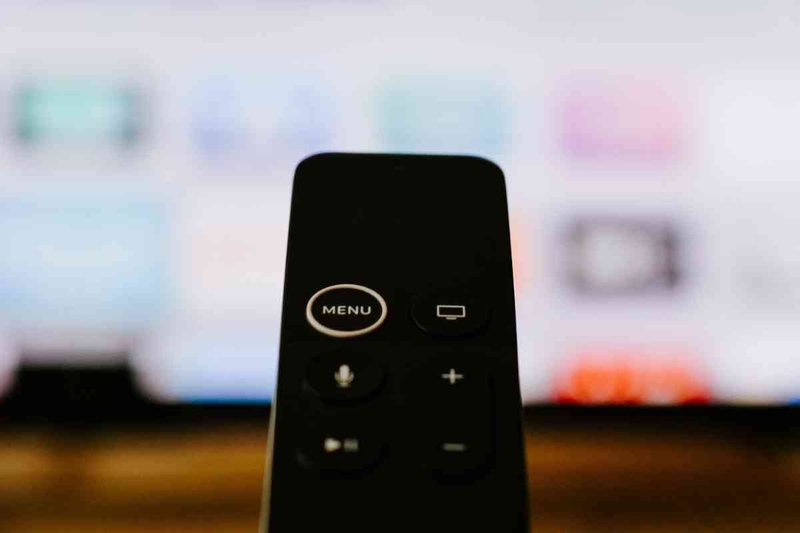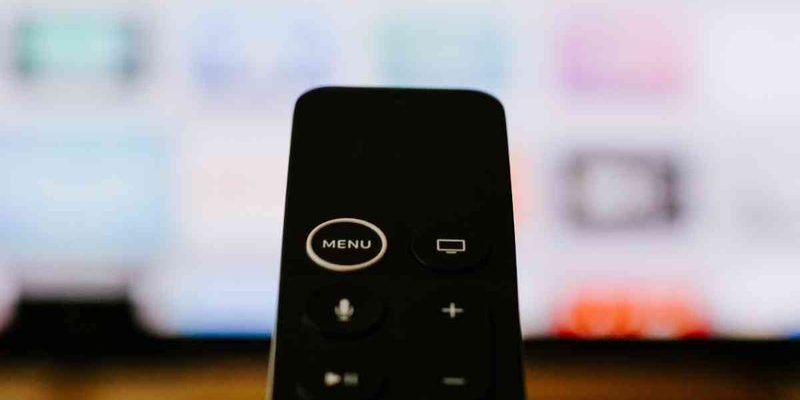
Now, before you wonder if you need a PhD in “remote-ology,” let me reassure you: pairing your Apple TV remote (whether it’s the classic aluminum Siri Remote or the newer, touch-enabled version) with a soundbar isn’t rocket science. We’ll walk through everything step by step, whether you have a Bose, Sonos, Samsung, LG, or another soundbar brand. And yes, I’ll explain the difference between IR, HDMI-CEC, and Bluetooth because, honestly, this stuff can sound like alphabet soup. Ready to finally control your soundbar’s volume from the couch?
Understanding How Apple TV Remotes Communicate With Soundbars
Here’s the thing—Apple TV remotes can be a little picky about how they send signals. Most of the time, that volume button doesn’t just control your TV’s sound; it can also handle other devices, like your soundbar. But it all depends on what’s under the hood: is your soundbar using infrared (IR), Bluetooth, or does it play nice with HDMI-CEC? Knowing this is the first step in syncing things up.
Let me break it down. The older white and silver Apple TV remotes use infrared, meaning the remote needs a direct line of sight. You point, you press, it beams a light your eyes can’t see, and—hopefully—your soundbar reacts. The newer Siri Remotes mostly use Bluetooth to talk to your Apple TV, but they still send IR signals to control the volume on other devices. So, if your soundbar is hidden in a cabinet, the IR signal might not get through, which, honestly, is annoying.
And then there’s HDMI-CEC. This is a hidden superpower built into some TVs and soundbars. If your Apple TV is plugged into a TV with HDMI-CEC and your soundbar is connected to the TV, pressing the remote’s volume button might “tell” the TV to adjust the soundbar automatically. Sometimes it works like magic; sometimes it’s like herding cats. Why does this matter? Because how you pair (or sync) your Apple TV remote to your soundbar depends on these invisible connections.
Getting Your Gear Ready: What You Need Before Pairing
Before you start jabbing at buttons with increasing frustration, let’s get your duck—or, in this case, remotes and cables—in a row. First question: what’s the exact model of your Apple TV remote? The most common ones are the aluminum Siri Remote (the skinny silver one) or the older black version. Flip it over, squint at the back, and you’ll usually spot the model info. Knowing this helps because the steps can vary ever so slightly.
Now, take a look at your soundbar. Does it have an “IR in” port? Can you spot a Bluetooth pairing button? These little details make a big difference in how you approach pairing. Some higher-end soundbars, like a Sonos Arc or Bose 700, support HDMI-CEC and don’t mind riding piggyback on your TV’s audio commands. Cheaper ones might only take direct IR signals.
Finally, grab all the things: batteries charged (duh), wires plugged in snugly, no pets sleeping on the soundbar, and nothing blocking the IR sensor. Trust me, half the time people think something is “broken,” it’s just a rogue blanket or a low battery. Once you’re sure everything’s ready, you can focus on the pairing process itself—without the panic.
Pairing Your Apple TV Remote Using IR: Manual Setup
You might be wondering, “Do I really need to dig through menus for this, or can I just press and hope?” Well, it’s not as simple as wishing, but thankfully, Apple makes the manual pairing process pretty straightforward. You’ll need to train your Apple TV remote to “learn” your soundbar’s volume codes—and yes, it feels a bit like teaching a dog to shake hands.
Start by firing up your Apple TV and heading to the Settings menu (the one with the gear icon). Next, tap into Remotes and Devices, then select “Volume Control.” You’ll see options like “Auto,” “TV via IR,” or “Learn New Device.” If your soundbar isn’t responding to “Auto,” choose “Learn New Device.” This is where the magic happens—or at least, you hope.
Grab your original soundbar remote. The Apple TV will prompt you to press the volume up and down buttons. Point the soundbar remote at your Apple TV (not the soundbar!) and press the buttons on command. Apple TV records the IR codes. When it’s done, name the new profile (e.g., “Living Room Soundbar”), save, and test the volume buttons. If all goes well, your Apple TV remote now speaks your soundbar’s language.
Using HDMI-CEC for Automatic Soundbar Control
If you’re lucky enough to have modern gear, HDMI-CEC might just do the heavy lifting for you. Think of HDMI-CEC as your devices’ way of silently whispering commands to each other through the HDMI cable—no extra remotes or menus needed. When it works, it’s honestly awesome.
The trick: both your TV and your soundbar need to support HDMI-CEC, and it has to be enabled in both places. Go into your TV’s settings menu (sometimes labeled “Anynet+” for Samsung, “SimpLink” for LG, “Bravia Sync” for Sony, and so on). Make sure CEC is on. Plug your Apple TV into the TV’s HDMI port, not the soundbar. Then connect the soundbar to the TV with HDMI ARC or eARC if possible.
Now, when you tap the Apple TV remote’s volume button, it should control the soundbar’s volume through the TV. No IR codes, no “learning.” But, HDMI-CEC can be a bit finicky—sometimes it takes a TV restart or power cycle for everything to sync up. If it’s not working, double-check that all cables are plugged in tight and that CEC is enabled on both the TV and soundbar.
Pairing With Bluetooth: When (and Why) It’s Rarely Needed
Here’s a fun fact you might not know: Apple TV remotes themselves don’t send audio over Bluetooth to your soundbar. The Bluetooth function is mostly for pairing the remote to your Apple TV box. But, some soundbars do support direct Bluetooth connections—just not from the Apple TV remote. If your soundbar has Bluetooth, you can usually connect your Apple TV directly to it in the Apple TV’s audio settings. This lets you send all sound, including movies or games, to the soundbar wirelessly.
To do this, put your soundbar in Bluetooth pairing mode (check the manual or look for a button with a Bluetooth symbol). On your Apple TV, go to Settings > Remotes and Devices > Bluetooth, and select your soundbar from the list. It’s a handy workaround if you want fewer wires or if your setup makes IR or HDMI tricky.
Just remember, this method won’t let you use the Apple TV remote’s volume buttons to control the soundbar—Bluetooth connections are more about sending the sound than syncing the remote’s commands. Still, for some folks, this is the easiest way to get big sound without big headaches.
Troubleshooting: When Your Remote Won’t Pair or Sync
Let’s face it—sometimes, no matter how carefully you follow the steps, your Apple TV remote still refuses to play nice with your soundbar. Here’s where a bit of remote troubleshooting comes into play. First, check the basics:
- Battery: Is your remote charged? Low batteries make for wonky signals and unresponsive buttons.
- Line of Sight: Obstructions between remote and soundbar sensor are sneaky; move anything in their way.
- Settings: Double-check all relevant menus: TV, Apple TV, soundbar. Sometimes, toggling HDMI-CEC off and back on is enough to reset stubborn connections.
If IR codes just won’t stick, try repeating the learning process. Sometimes, the angle of your remote or distance from the Apple TV matters—move closer or further if needed. For HDMI-CEC, unplug the TV and soundbar for a minute to give them a fresh start. If you recently updated your Apple TV’s software, check the soundbar’s firmware too—some brands release updates that fix compatibility hiccups.
If all else fails, don’t be afraid to Google your exact soundbar model and “Apple TV remote code.” Manufacturer forums and Apple’s support pages often have device-specific walk-throughs that can save hours of hair-pulling.
Comparing Apple TV Remotes With Universal Remotes
You might wonder: “Why not just use a universal remote instead?” That’s totally fair, and, in some setups, it can actually simplify things. Universal remotes (think Logitech Harmony or Sofabaton) are designed to control multiple devices at once—including your Apple TV streaming device, soundbar, TV, and even that ancient DVD player you keep around for nostalgia.
One advantage of universal remotes is the ability to program specific device codes, so there’s less guesswork. The downside? They can be fiddly to set up and sometimes less responsive than Apple’s own remote. Plus, Apple TV’s remote has a certain minimalist charm—it’s slim, rechargeable, and usually always right where you left it (unless your couch is especially hungry).
If you find the Apple TV remote too limiting, a universal remote could be a solid upgrade. But, for most people, getting the Apple TV streaming device remote to pair or sync with their soundbar is usually enough—no need for extra gadgets on the coffee table.
Tips for a Smooth Pairing (and Fewer Remote Headaches)
Honestly, a little preparation goes a long way. Before pairing, make sure your soundbar and TV are updated to the latest firmware—manufacturers sneak in bug fixes all the time. Double-check that all cables (especially HDMI) are plugged into the right ports and are fully seated. If things don’t work immediately, try turning devices off and on again. It sounds like cliché tech advice, but it still solves most syncing issues.
Keep your Apple TV remote’s battery topped up. If you’re using IR, remember that direct sightlines make a huge difference. For HDMI-CEC, a simple power cycle (unplug, wait, plug back in) is sometimes all you need. And if you add new devices to your setup (like a game console or Blu-ray player), you might need to redo or update your remote’s volume control settings.
Quick reality check: Electronics sometimes act up for no apparent reason. Don’t take it personally. Sometimes tech is weird—and sometimes, it just wants a reboot.
The Takeaway: Enjoying Seamless Sound With Your Apple TV and Soundbar
Pairing your Apple TV streaming device remote to a soundbar can feel complicated at first, especially with all the technical terms and different connection types floating around. But once you know the basics—how IR, HDMI-CEC, and Bluetooth work—it honestly becomes a lot less intimidating. A few simple checks, some thoughtful setup, and a little patience are usually all it takes to get your remote and soundbar working in harmony.
The best part? Once it’s all paired and synced, you can adjust your movie or playlist volume from one remote, from anywhere on the couch, without juggling five different controllers or sprinting to the TV every time the soundtrack gets too loud. And that, if you ask me, is what home streaming should feel like—easy, smooth, and just a little bit magical.
If you ever hit a snag, don’t stress. There’s always a fix, a workaround, or a new trick to try. Consider this your friendly reminder that you don’t have to be a tech genius to get epic sound from your Apple TV streaming device remote and your favorite soundbar. Now—grab that popcorn and enjoy movie night.
